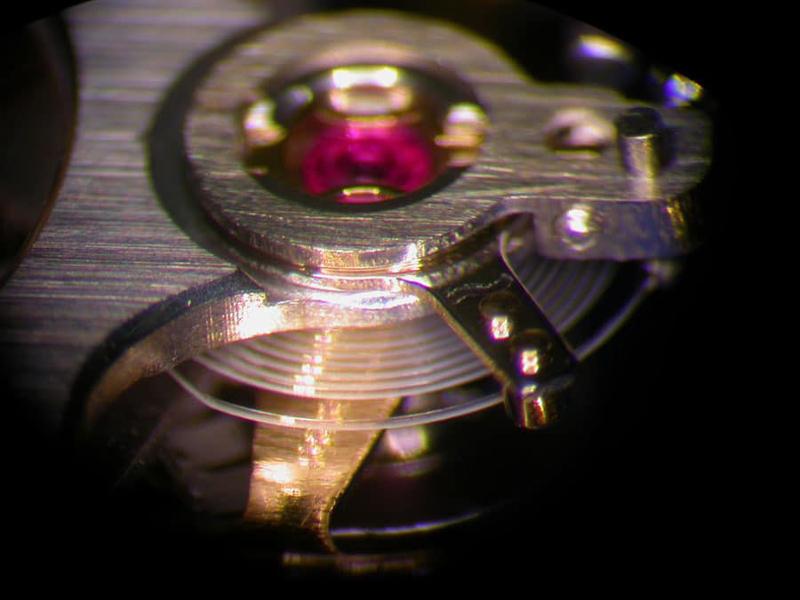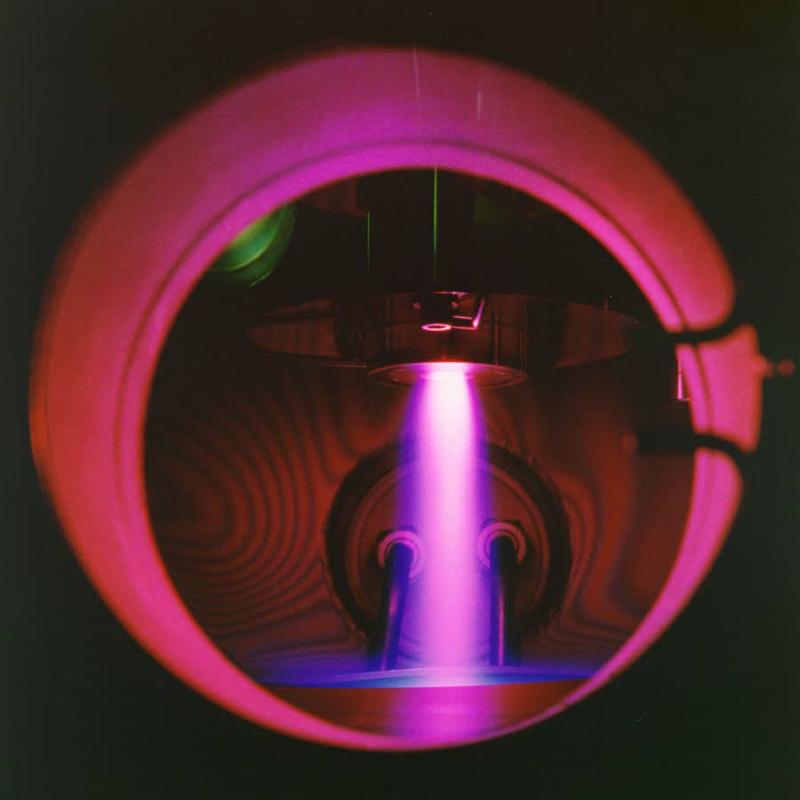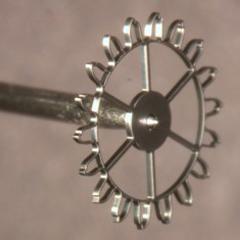Press, Watchtime.net, 2013.10. ➜ Silicon is good, but for watches there is actually a better material that women like to call their best friend: Diamond, the hardest material of all.
Here you can Ulysse Nardin can once again be considered a pioneer. On April 26, 2002, the first contacts were made with GFD, Gesellschaft für Diamantprodukte, an Ulm-based start-up focusing on chemical vapor deposition (CVD) for the synthetic production of diamonds.
In June 2002, a “test” object of the novel dual-direct inhibition of CVD diamond was still available. He was followed by a new type of spiral spring, which was intended to demonstrate the elastic properties of diamond. Diamond is not as hard and inflexible as it seems on the surface. The first clocks started ticking on December 27, 2002. Nevertheless, the Freak Diamond Heart was a long time coming until 2005. Although the 100 units were sold out in no time, the cost balance associated with full-diamond inhibition was sobering: CVD components cost 50 times as much as silicon components. Fortunately, a happy medium called Freak DiamonSil was already emerging at the time.
The escapement of the Caliber 200 watch launched in 2007 consisted of a new type of composite material: silicon components with a synthetic, nano-crystalline diamond coating. The precise components, which are also energy-saving due to their low mass, were manufactured by the Swiss company Sigatec SA in Sion and the German company GFD in Ulm.
However, even this promising process was subject to quantitative restrictions and a limited edition of the Freak DiamonSil. Under the aegis of Rolf W. Schnyder, Ulysse Nardin was able to acquire DCS (Diamond Coated Silicon) technology.
Together with GFD and its managing director Peter Gluche, a separate department was set up in the new Sigatec SA building, which uses a highly complex breeder to coat silicon components with diamond.
At this point at the latest, the question arises as to why diamond at all if silicon is as perfect as some people like to claim?
The “indomitable” not only impresses with its toughness, but also with its lightness. The specific weight is around 25 percent lower than that of the already very light titanium. Nevertheless, diamond has around ten times the mechanical strength of titanium. The fact that such hard materials are extremely brittle also applies to diamond. Due to its remarkable mechanical strength, it takes extremely high forces to break diamond. The losses when two smooth diamond surfaces rub against each other are also comparatively low. Even without lubricant, they are only 20 percent of the friction that results from measurements of the contact between steel and synthetic ruby.
It is well known that natural diamonds are extremely expensive. Another reason why they are not suitable for watch components is that they cannot be processed using conventional technologies. On the other hand, diamond consists entirely of carbon. This, in turn, is inexpensive and available almost indefinitely. In nature, diamonds are formed under powerful pressure of around 70 kbar at temperatures of around 1500°Celsius at a depth of around 150 km. In 1955, he succeeded for the first time in imitating nature and artificially transforming graphite, i.e. weakly bound carbon, into diamond. This process required temperatures of up to 2,000°C and pressures of up to 60 kbar. Another breakthrough came in the 1980s, when technicians developed the innovative CVD process.
CVD, or Chemical Vapor Deposition, condenses the carbon contained in methane (biogas) into a thin layer of diamond. Diamond coatings are produced on carrier material under energy supply at a negative pressure of around one mbar. The layer consists of more or less large diamond crystals that grow together on their sides. Coated components therefore have the diamond properties described above. A layer thickness of five thousandths of a millimeter is completely sufficient for most micromechanical applications. Diamond differs from graphite and other types of carbon by the particularly strong bond between the carbon atoms. Of course, nothing comes from nothing. In this case, linking the carbon atoms requires a lot of energy. The Sigatec SA reactor also contains a wealth of know-how. It is the result of around ten years of intensive development work. During this time, four extensively tested models were created. As the largest of its kind to date, the current variant allows industrialization of this type of diamond production for micromechanics.
Thin diamond coatings are in demand where a workpiece to be optimized already exists. In this case, the silicon components are produced by microtechnology using deep reactive ion etching, or DRIE for short.
Image, example: A 5µm-thick layer of nanocrystalline diamond surrounds the silicon core of the escapement wheel from Ulysse Nardin.
Engineers at Robert Bosch GmbH launched the patented dry etching process for silicon back in the early 1990s. This was followed by continuous further development. DRIE chemically etches unprotected silicon with the help of fluorine ions. This produces components with straight edges and almost perfectly smooth flanks. The result is almost frictionless gliding and oil-free operation. However, the extremely complex process technology makes DRIE extremely expensive. Similar to microchips, small watch parts are literally cloned using this method. So one piece is one hundred percent like the other. The first step in the production process is to create a greatly enlarged, extremely precise drawing of the desired component. The surface of a silicon wafer coated with light-sensitive photoresist is optimally utilized by clever reduction projection to the final size.
If diamond coating is still to be used, this must of course be taken into account in the design. In the silicon wafer, the components are held in place with the aid of tiny bridges and coated three-dimensionally with the wafer-thin nanocrystalline diamond layer. Incidentally, the necessary process energy is not bad. Anyone who wants to use diamond-coated silicon components in the UN 118 manufacture caliber, as Ulysse Nardin does, basically only needs one concept: Mimotec supplies the ultra-precise lithographic preliminary stage, Sigatec offers the etching systems and the reactor for diamond coating.






